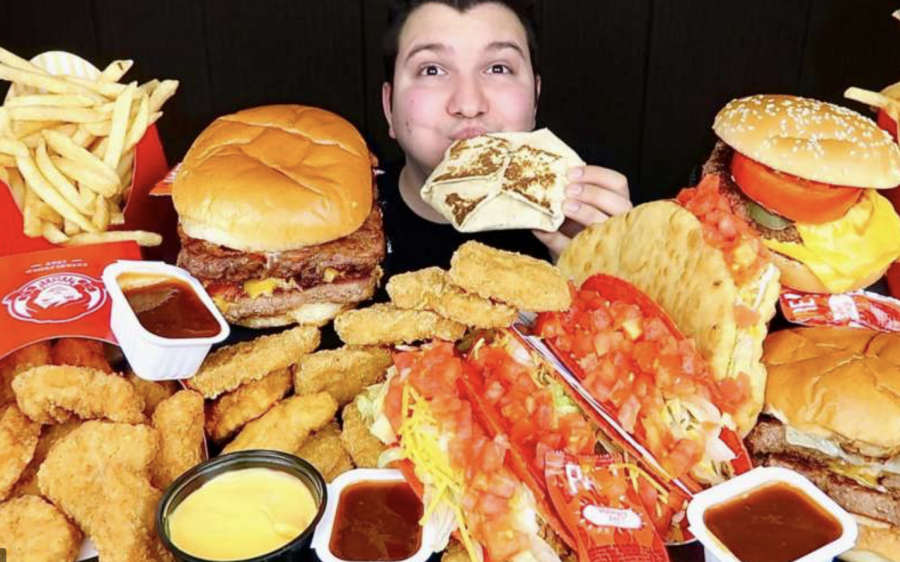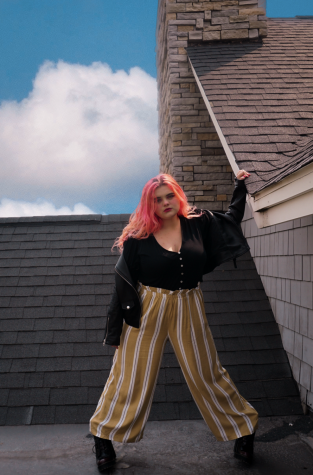Mukbangs: Stuffed to the Breaking Point
December 16, 2019
Some call it ASMR, others call it a dangerous trend that promotes disordered eating. Mukbangs are categorized as videos in which people eat a large amount of food in a short period of time, usually 10-30 minutes. Some of the most popular involve seafood, fast food, and even raw animals such as live octopus, raw liver, and raw salmon.
The amount of food people consume in such a short amount of time could lead to serious health problems such and gastrointestinal side effects. The Emily Program writes, “Binge eating overloads a person’s system with a flood of calories, sugar, fat and/or carbs, which results in the body using a large amount of energy to digest the food, which may result in low energy, sleepiness, and sluggishness.” While many people find watching these videos to be soothing, they don’t always consider what these videos may be encouraging.
A lot of people see eating disorders as anorexia and bulimia and disregard binge eating as a consequence of “America’s expanding waistline”, when in reality, it’s the most common eating disorder in the United States (The Emily Program).
Binge eating disorder is categorized by eating a larger than what most people would consider average amount of food in a very short period of time, less than 2 hours, eating more rapidly than normal, and eating until uncomfortably full. All of these behaviors and more are displayed by mukbangers.
Binge eating disorder isn’t the only eating disorder that mukbangs will encourage, in fact, many people watch mukbangs so that they will fill full themselves and not be tempted to overeat. One person commented, “I have an ed (eating disorder) and I love watching mukbangs lmao it makes me feel full,” which appears to be a common thing. Another commenter said, “I used to watch mukbangs and pretend I was the one eating, so I won’t eat anything.” Some people watch them for other reasons, “I usually try to restrict, and when I have a binge I watch mukbangs and think ‘at least i’m not at this point, not even close’ or if I’m restricting a lot I watch them so I don’t feel hungry anymore.”
While it is not the fault of the creators for which reasons people watch their videos, it is their responsibility to properly warn people about what their videos entail. These videos can be dangerous for both the people involved and the people who view them.



